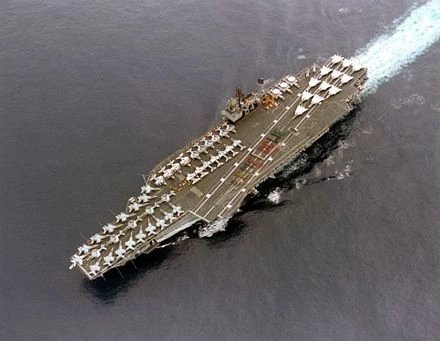
The tragic fate of aircraft carriers – symbols of American strength – Part 1
America’s aircraft carriers at their peak were kings of the seas, surpassing any competitor in the world.
This is the latest aircraft carrier to face controversy.
In May 2014, the US Navy sold USS Saratoga (CV-60) – a non-nuclear aircraft carrier during the Vietnam War – to ESCO Maritime Group for scrap.

Saratoga and Constellation are just the latest in a long list of decommissioned aircraft carriers, the first of which was an aircraft carrier launched in the 1920s.
Langley, the first aircraft carrier to be `retired`.

As an aircraft carrier prototype, Langley was used for various experiments with naval aviation concepts, and in 1922 a Vought VE-7SF Bluebird biplane successfully took off from
USS Lexington (CV-2)
The US Navy began building this ship in 1922 and went into operation in 1925. Lexington weighs 37,000 tons and is about 276 meters long, capable of carrying 78 fighter aircraft.
This was the first aircraft carrier designed to counter Japan’s Pearl Harbor-style bombings by carrying planes to hunt down Japanese aircraft.
USS Saratoga (CV-3)
Saratoga was converted into an aircraft carrier from a warship in 1922. Unlike the CV-2, the CV-3 survived multiple attacks by Japan during World War II. However, this ship

During the atomic bomb tests at Bikini Atoll in July 1945, the “air pressure” of the first test caused little damage, but a later underwater test caused the ship to sink.
USS Ranger (CV-4)
This is also one of the few lucky aircraft carriers to `survive` World War 2. Launched in 1933, Ranger was the first aircraft carrier to be completely built instead of being converted from a
In 1942, the CV-4 helped the allies launch a North African campaign from the coast of Morocco and later attacked German shipping near Norway.
USS Yorktown (CV-5)
Yorktown was put into operation in 1936 with a weight of 19,800 tons, a length of 246 meters, and a design to accommodate 90 aircraft.


